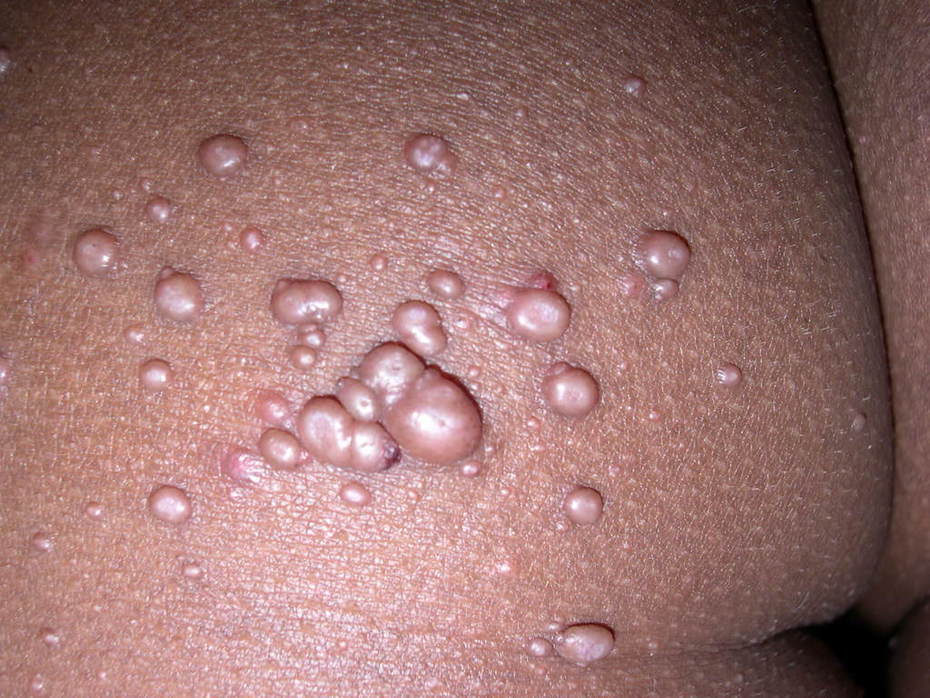
Diagnosis: Molluscum Contagiosum
Findings:
- Shiny dome-shaped papules often with central umbilication (depression)
- Most commonly skin-colored or pinkish, though may also be hypopigmented or hyperpigmented
- In adults, it is most commonly spread through sexual transmission, and thus found in groin or genital area
- In children, most commonly NOT found in the groin or genital area
Key teaching points:
- Molluscum contagiosum is caused by a virus, specifically a poxvirus
- It is spread through direct contact or through sharing of items such as towels. In adults, it is most commonly spread by sexual contact.
- More common in young children, and less frequently in older children and adolescents
- Usually diagnosed through visual examination, though if needed, a biopsy or smear of the contents may be performed
- Treatment may include: no treatment, topical treatments such as cantharidin (blistering beetle juice), cryotherapy (cold spray), or scraping the spot. In the US, molluscum contagiosum in adults is most commonly treated with cryotherapy if seen in a doctor’s office.
- In kids with eczema or atopic dermatitis, the molluscum can be more difficult to get rid of
Credit: Case submitted by dermatologist Dr. Shahbaz A. Janjua to dermRounds Dermatology Network




